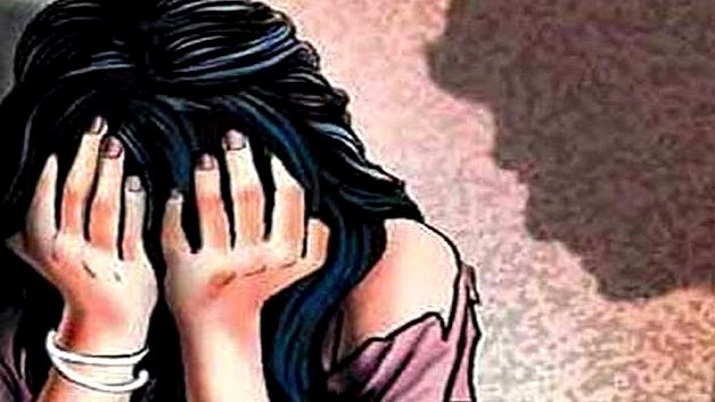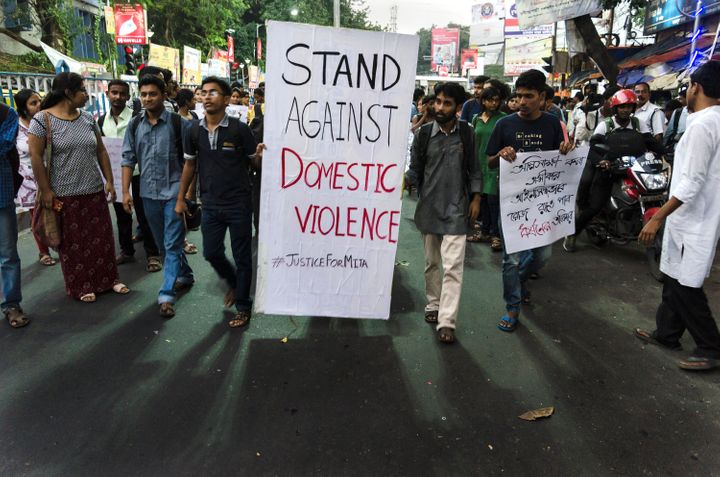Trigger warning: Mention of domestic abuse, violence
Murder over breakfast: Man kills wife over salty sagoo khichdi.
Breakfast delayed, 76-year-old builder shoots daughter-in-law in Thane
Blinded by rage, man stabs wife repeatedly in Delhi’s Rohini as bystanders record incident
These are just some of the many news reports of domestic violence where the violent death of women over seemingly incongruous reasons are reported to the public. However, beyond such reporting and the shock over how such horrible things occur, the world moves on.
The coverage of such cases often fails to present these cases as public problems tied to systemic gender inequalities and power imbalances. It is relegated to the private sphere under the line of ‘don’t air your dirty laundry.’ Cases such as these are not anomalies, but representative of a larger epidemic of gendered violence, especially in the domestic sphere. The violence doesn’t occur due to some justified reason or slight made by the victim, it occurs because it is normalised and the perpetrator can do it, often without impunity.
There are minor consequences for it, leaving the victims, usually women or children, forced to live under such abuse. Domestic violence, unfortunately, is only discussed when an extreme case of death or permanent disfiguration occurs. It doesn’t account for the mental trauma and scars of the victims of violence. The daily abuse that many women in the country face are brushed over, disregarding their right to a safe and dignified life.

In 2019, the National Crime Records Bureau reported that 30.9 per cent, i.e, a majority of 4.05 lakh cases under crimes against women were recorded under Section 498A of the Indian Penal Code (IPC) covering ‘cruelty by husband or his relatives.’ Domestic violence in India is widespread cutting across class, caste, age, and education. While variation in the status of women is high across regions, there is little difference in the rates of domestic violence.
Moreover, considerable underreporting of the abuse was observed, as abuse and beating would be accepted as commonplace. Only severe physical abuse was considered worth mentioning by the women who faced it, in conversations or interviews with researchers.
Unfortunately, the narrative around domestic violence continues to encourage silence, especially considering strong social norms governing the sanctity of the family unit. These norms are meant for the institution of marriage to remain strong while ignoring the abuse that occurs within those boundaries. The tendency to value family privacy, and prioritise the status of the family over individual dignity perpetuates this acceptance of abusive behaviour. It also prevents victims from seeking outside help, where social systems thus influence legal systems to prioritise the good of the family over the victim’s well-being
These cases are estimated to be wildly underreported for a myriad of reasons. Often, survivors lack financial independence, and social or familial support, and are conditioned and punished by social norms for seeking alternatives. They also fear retaliation and face victim-blaming, as well as avoid being subject to a tangled bureaucratic and legal system, that does not ease their efforts to seek help.
Historically, domestic violence was understood as driven by dowry, leading to its criminalisation under the Dowry Prohibition Act (1961). Dowry reinforces the role of women as property, and determines the unequal power dynamics in a household. However, it must be noted that dowry is not the only causal factor, and is indicative of the larger social acceptance of such violence against women.
Numerous studies have been conducted to understand the multi-faceted reasons behind domestic violence. Socio-economic pressures, and hierarchical structures such as occupational status, can lead to increased frustration or entitlement. When linked to rigid gender roles and expectations such as the devaluation of women’s household work through an interaction of various social, psychological, and economic factors, can result in family violence, with women disproportionately being subjected to abuse.
Also read: Probing Into The Domestic Violence Problem In Rural India

Unfortunately, the narrative around domestic violence continues to encourage silence, especially considering strong social norms governing the sanctity of the family unit. These norms are meant for the institution of marriage to remain strong while ignoring the abuse that occurs within those boundaries.
The tendency to value family privacy, and prioritise the status of the family over individual dignity perpetuates this acceptance of abusive behaviour. It also prevents victims from seeking outside help, where social systems thus influence legal systems to prioritise the good of the family over the victim’s well-being.
The media is a powerful tool and can contribute to shifting perceptions. Films like Thappad brought nuance to the discussion on domestic violence, and the extent of what level of violence is perceived as concerning, while also highlighting how different socio-economic statuses limit choices
Furthermore, the tendency of mass media to either ignore it, trivialise it, or make it a punchline perpetuates the normality of such abuse. News coverage often presents the violence as incidental. Terms like ‘blinded by rage’, ‘suspected infidelity‘, and ‘prompted by a petty argument’, create misconceptions of such violence as a private affair that can easily be resolved.
Violence shouldn’t be recognised as violence only when it results in a brutal physical beating or death. Domestic violence is misrepresented in the media, limiting the potential to change perceptions about it. Beyond the reportage of the shocking and eye-catching cases, news media, with its heavy sphere of influence in Indian society and policy, needs to build on more sensitive reporting of abuse. Moreover, the term ‘domestic violence’ needs to be used when reporting such cases, highlighting its systemic nature and critiquing gender roles.
Sensitisation training is necessary for ethical reporting. Collaboration between media organisations and advocacy organisations can build a more nuanced awareness of the issue. Information on the survivor’s rights and helpline services, including legal and psychological assistance can increase accessibility and reach. Several countries have developed guidelines around the news coverage of domestic violence. Framing it as a social problem is recommended, as well as providing statistics to support the narrative are insisted.

A narrative of survivor support and absolute condemnation of such violence is needed. Issues of abuse need to be discussed in the mainstream, not in muted outrage over the dinner table. The media is a powerful tool and can contribute to shifting perceptions. Films like Thappad brought nuance to the discussion on domestic violence, and the extent of what level of violence is perceived as concerning, while also highlighting how different socio-economic statuses limit choices.
This should be reflected in news coverage as well. Conversations around domestic violence on a broader spectrum can influence behavorial changes and social norms. Only through open acknowledging of the systemic nature of domestic violence can we tackle the root cause which rests on unequal patriarchal systems that are both the cause for such abuse, as well as barriers that limit assistance and prevention.
Also read: In The Invisibilisation Of Domestic Abuse, Is Home Really A Safe Haven?
Featured Image Source: Huff Post
About the author(s)
Aradhana Choudhury is an aspiring policymaker. She is currently pursuing herMaster’s in International Development and is seeking to apply intersectional learningto development strategies. She has a keen interest in development research, policyanalysis, and gender. She hopes to support tangible impacts towards gender equalityand equity, with community participation at the forefront.Aradhana also has a keen interest in history and heritage studies and has worked toexpand the interest of general audiences in the history of a place





The very fact that the term ‘domestic violence’ is automatically supposed to mean ‘domestic violence against women’ show just how little regard there is for domestic violence against men. There is just as much domestic violence against men but men don’t tell anyone because of social shame. Laughter followed by ‘biwi se pitta hai’ is a common response. Along with physical violence, men also face verbal and psychological abuse, which is just as worse. Numerous studies show that women are more violent. Numerous social experiments show the public laughing when a woman abuses a man in public. There are no shelters for male victims of domestic violence. Media does not report domestic violence against men either.
https://mensdayout.com/nirbhaya-type-assault-in-rohtak-wife-in-laws-insert-cane-english-media-silent/
https://mensdayout.com/watch-video-cant-see-my-old-parents-running-around-courts-rourkela-man-ends-life-due-to-alleged-false-dowry-case-by-in-laws/
https://mensdayout.com/21-year-old-man-dies-by-suicide-after-girlfriend-files-rape-case-blackmails-him-for-money/
https://mensdayout.com/newly-married-patiala-groom-dies-by-suicide-due-to-rs-70-lakh-alimony-harassment-by-in-laws/
https://mensdayout.com/kerala-man-father-die-by-suicide-after-wife-filed-498-a-case-against-husband-his-family/
Crime does not have a gender.
You’ve just shown one side of the coin. Spousal abuse is a serious problem that is not just faced by women. Countless men are at the receiving end of harassment, and face physical and psychological abuse at the hands of their wives. What’s worse, the humiliation and shame of this act going public forces them to keep quiet. 70% suicides in India are men. Most are married men.
You’ve told us how many cases were reported under the dowry act in 2019, but you didn’t tell us that the majority of cases were found to be false. Those who were falsely convicted lost their jobs and faced social boycott. Many sunk into acute depression, many committed suicide. Many grooms’ siblings and old parents were also arrested based on a mere complaint. Many old parents suffered from heart attacks and died.